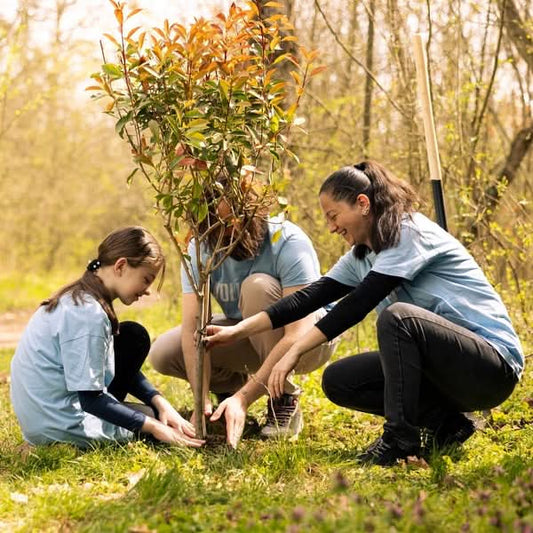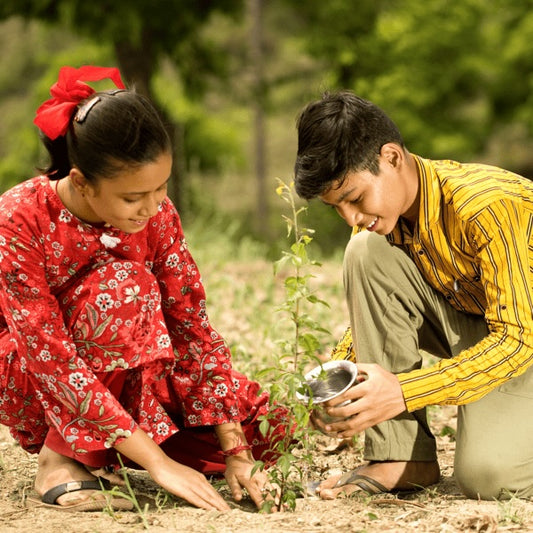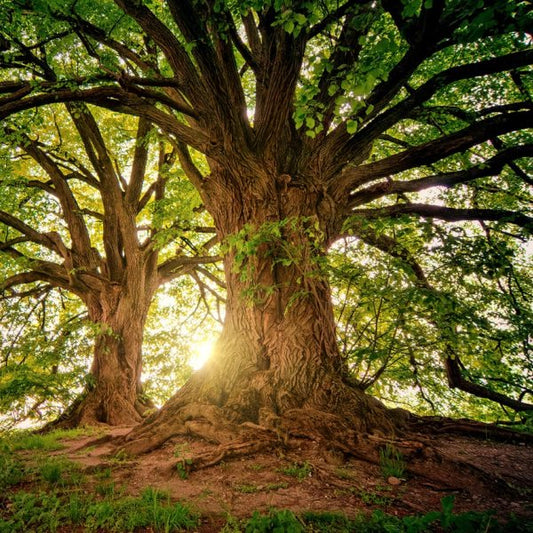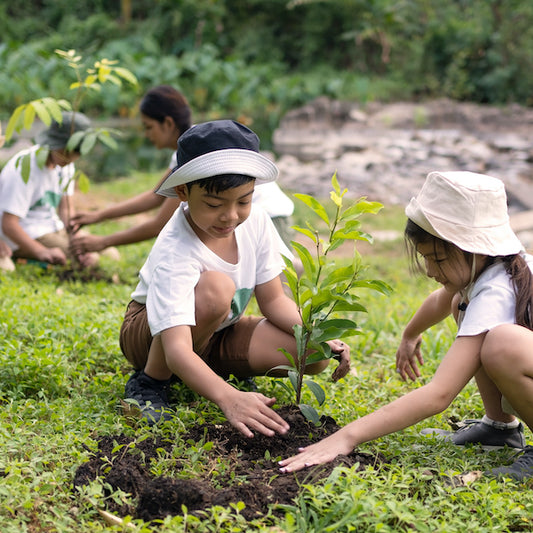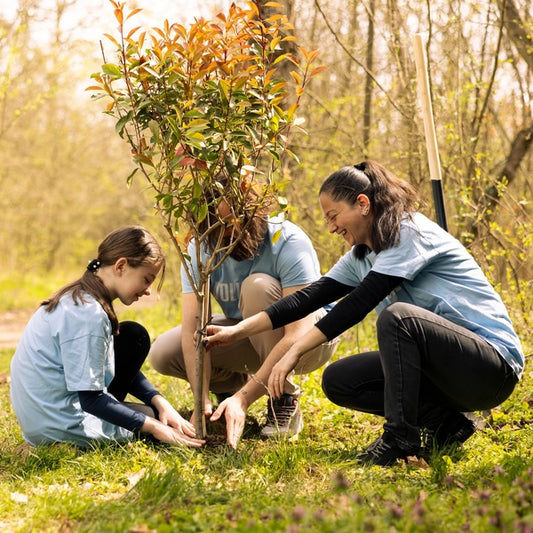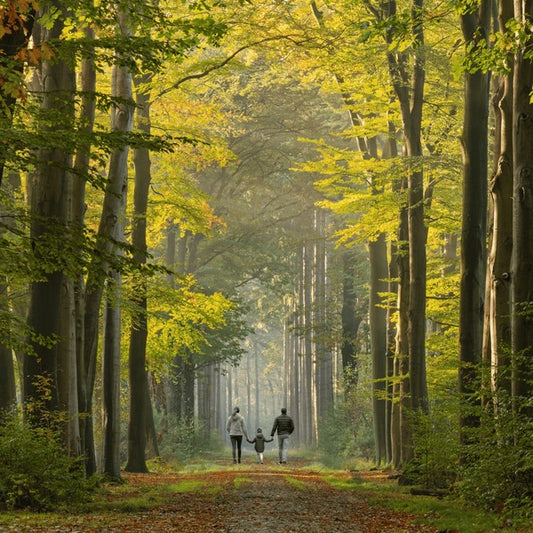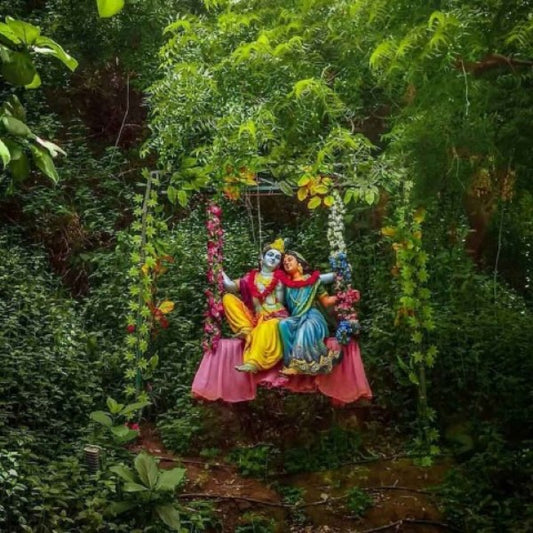Forest by Design: Godrej Turns Industrial Space into a Biodiversity Hu
Godrej Consumer Products Limited (GCPL), a trailblazer in the Indian FMCG space and part of the 125+ year-old Godrej Group, continues to lead not only Read more
Project Update 3
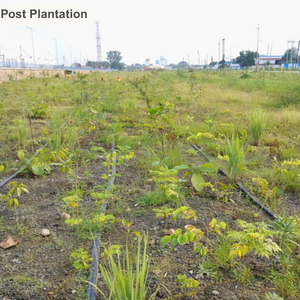
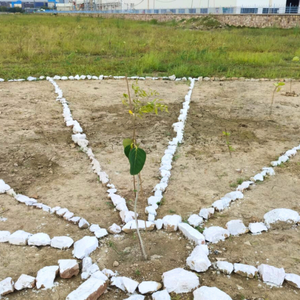
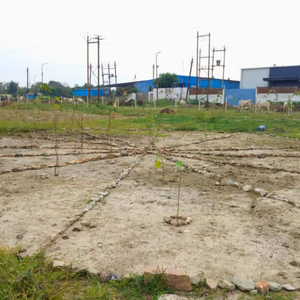
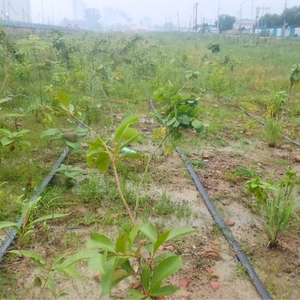
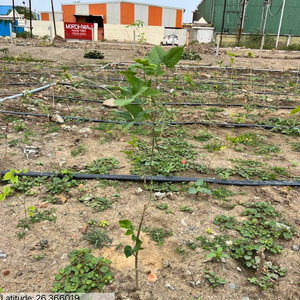

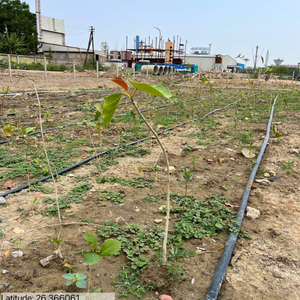
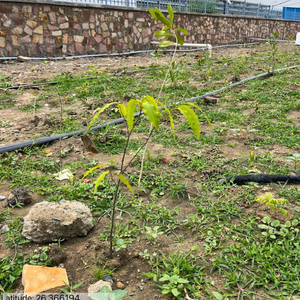
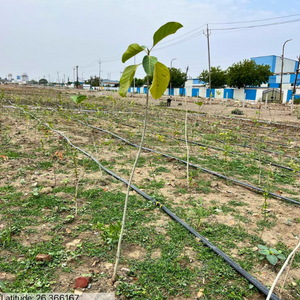
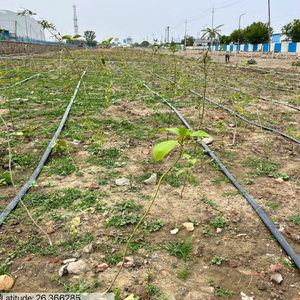
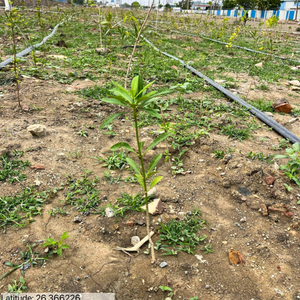
Project Update 2
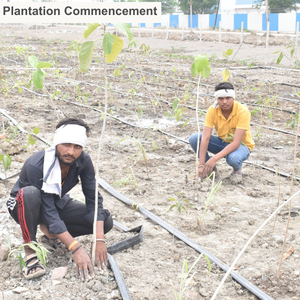
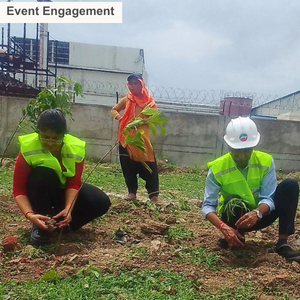
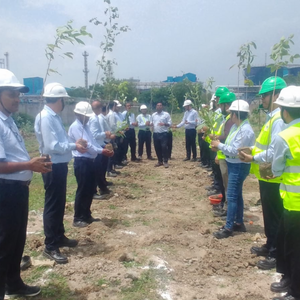
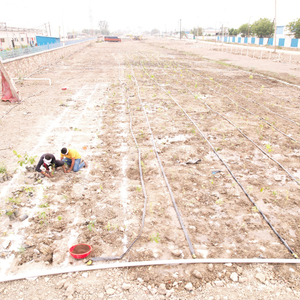
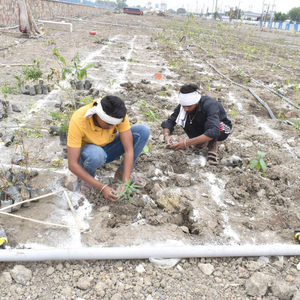
Project Update 1
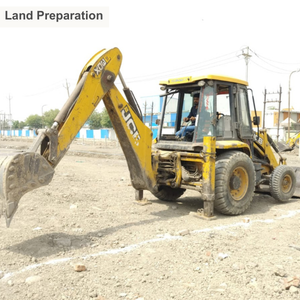
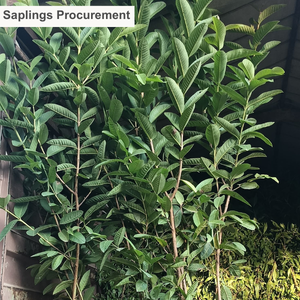
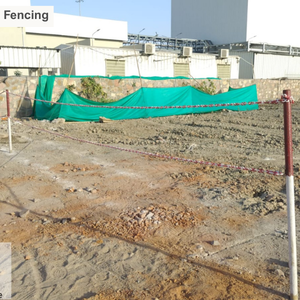
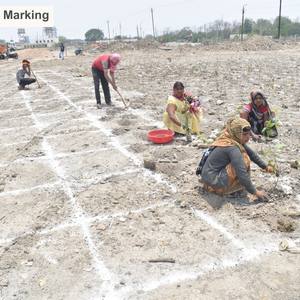
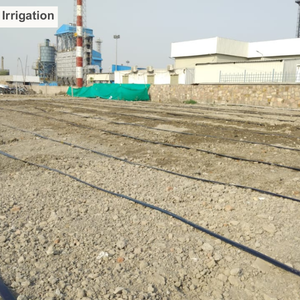

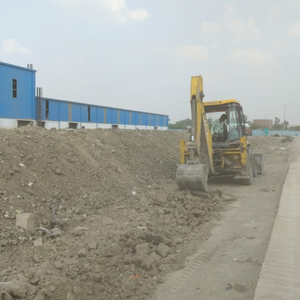
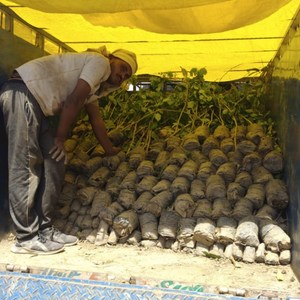
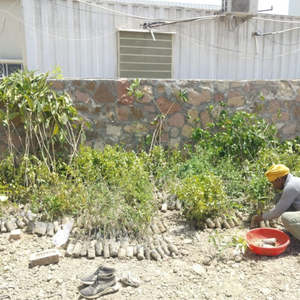
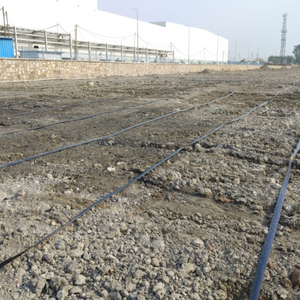
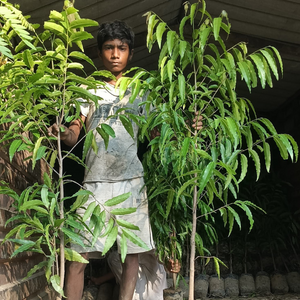
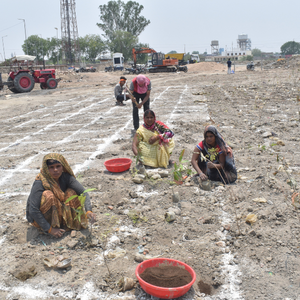
Digital Forest
Forest with 36,500 Trees planned
Want to plant your tree now?
Plant a Tree @ 299Trees Planted
Forest by Design: Godrej Turns Industrial Space into a Biodiversity Hub
Godrej Consumer Products Limited (GCPL), a trailblazer in the Indian FMCG space and part of the 125+ year-old Godrej Group, continues to lead not only in innovation and consumer satisfaction but also in environmental responsibility. As part of its commitment to sustainability and inclusive growth, GCPL has launched a tree plantation initiative using the Miyawaki forest concept, transforming unused land near its factory into a thriving green belt.
This initiative is aimed at rejuvenating underutilized spaces by planting dense, native species of trees using the Miyawaki method, a proven approach to creating fast-growing, self-sustaining urban forests. Through this, GCPL intends to improve air quality, reduce pollution, support local biodiversity, and restore ecological balance in the area.
The green belt will serve as a natural carbon sink, contribute to noise reduction, and provide habitat for birds and insects, thereby enhancing the environmental well-being of the surrounding communities. Rooted in its core values of innovation and eco-consciousness, GCPL’s forestation project reflects a deep commitment to building a cleaner, greener, and more sustainable future.
Project Planning & Execution
No of Trees: 36500
Plantation Location: Godrej Consumer Products Limited, NH92, Malanpur, Gwalior, MP 477117
Plantation Duration: 7th April 2025 to 30th August 2025
Name of Species: Amaltas – Cassia fistula, Gudhal – Hibiscus, Tecoma – Tecoma stans, Ashoka – Saraca asoca, Bottle Brush – Callistemon citrinus, Chirol – Holoptelea integrifolia, Karonda – Carissa carandas, Custard Apple – Annona squamosa, Earleaf Acacia – Acacia auricuriformis, Jamun – Syzygium cumini, Bael – Aegle marmelos, Karanj –, Pongamia pinnata, Imli – Tamarindus indica, Jackfruit – Artocarpus heterophyllus, Lemon Grass – Cymbopogon citratus, Jangal Jalebi – Pithecellobium dulce, Kachnar – Bauhinia variegata, Kadamba (Neolamarckia cadamba), Kaner Red – Nerium oleander, Pomegranate – Punica granatum, Saptaparni – Alstonia scholaris, Kashid-Cordia dichotoma
Champa, Bauganvalia, Conocarpus, Laila Majnu-Excoecaria cochinchinensis, Kanak Champa
Lemon – Citrus limon, Gossypium arboreum, Amla – Phyllanthus emblica, Mahneem-Melia dubia, Arjun – Terminalia arjuna, Mango – Mangifera indica, Chameli Akav Durva
Neem-Azadirachta indica, Palash – Butea monosperma, Peltophorum pterocarpum
Pipal – Ficus religiosa, Guava – Psidium guajava, Safed Kher – Acacia senegal, Madhu Kamini – Murraya paniculata, She Oak- Casuarina equisetifolia, Sheesham – Dalbergia sissoo, Teak – Tectona grandis, Mahogany – Swietenia mahagoni, Tulsi-Ocimum tenuiflorum, Yellow Flame Tree-Peltophorum pterocarpum, Sweet Neem, Anjeer
Sandalwood, Gulmohar.
Species Selection & Its Benefits:
Urban and community plantations play a vital role in enhancing biodiversity, improving air quality, and providing ecological, social, and economic benefits. The selection of tree and shrub species is carefully planned to create a multi-functional green space that combines ornamental beauty, fruit production, timber value, medicinal uses, and ecological services. By including a mix of flowering, fruit-bearing, shade-giving, medicinal, and resilient species, plantations not only support local wildlife and improve soil health but also promote cultural significance and community well-being. The following overview highlights the species chosen for such initiatives and their respective benefits.
Flowering and Ornamental Species such as Amaltas (Cassia fistula), Gudhal (Hibiscus), Tecoma (Tecoma stans), Ashoka (Saraca asoca), Bottle Brush (Callistemon citrinus), Kachnar (Bauhinia variegata), Kaner Red (Nerium oleander), Kanak Champa, Champa, and Bauganvalia are primarily selected for their ornamental and aesthetic value. These species produce vibrant flowers throughout the year, enhancing urban landscapes, campuses, and public spaces. Beyond aesthetics, flowering plants support pollinators such as bees, butterflies, and birds, contributing to biodiversity conservation. Many of these species also have medicinal uses; for example, Ashoka is valued in traditional medicine for its uterine health benefits.
Fruit-bearing and Edible Tree Species such as Jamun (Syzygium cumini), Amla (Phyllanthus emblica), Mango (Mangifera indica), Guava (Psidium guajava), Custard Apple (Annona squamosa), Pomegranate (Punica granatum), Jackfruit (Artocarpus heterophyllus), Bael (Aegle marmelos), Karonda (Carissa carandas), Imli (Tamarindus indica), and Lemon (Citrus limon) are selected for their nutritional and economic benefits. These trees provide fresh fruit for communities, promote food security, and attract wildlife such as birds and bats that aid in seed dispersal. Fruit-bearing trees also enhance microclimate regulation by providing shade and cooling urban areas, while supporting sustainable urban greening initiatives.
Shade, Timber, Nitrogen Fixing Trees such as Neem (Azadirachta indica), Pipal (Ficus religiosa), Saptaparni (Alstonia scholaris), Sheesham (Dalbergia sissoo), Teak (Tectona grandis), Mahogany (Swietenia mahagoni), Acacia species (Earleaf Acacia & Safed Kher), Peltophorum pterocarpum (Yellow Flame Tree), and Pongamia (Karanj) are chosen for shade provision, timber value, and soil enrichment. Many of these species are nitrogen-fixing (like Acacia and Pongamia), which improves soil fertility and benefits nearby plants. Timber trees contribute to long-term economic sustainability, while large canopy trees provide shelter for birds, improve air quality, and reduce urban heat.
Medicinal, Aromatic, Cultural Species like Tulsi (Ocimum tenuiflorum), Madhu Kamini (Murraya paniculata), Mahneem (Melia dubia), Sandalwood, Chameli, and Sweet Neem are valued for their medicinal, aromatic, and cultural significance. Tulsi is renowned for its therapeutic properties, while Sandalwood and Mahneem offer commercial value in perfumery and timber. Cultural species such as Tulsi and Pipal are also integral to local spiritual and religious practices, making them important in community-oriented plantations.
Ecological and Coastal Protection Species like She Oak (Casuarina equisetifolia), Conocarpus, and Excoecaria cochinchinensis (Laila Majnu) are selected for their ecological resilience. These trees are suitable for soil stabilization, windbreaks, and erosion control, especially in coastal or urban fringe areas. Fast-growing species like Casuarina provide immediate canopy cover and act as protective belts, reducing soil erosion and enhancing green cover in challenging environments.
Beneficiaries Details
-
Target Population: Employees, stakeholders, and local community members of Godrej Consumer Products Limited, NH92, Malanpur, Gwalior, MP.
-
Age Group: Inclusive of all age groups, ensuring broad community participation.
-
Gender: Inclusive of all genders.
- Social & Economic Status: Open to all social and economic backgrounds, emphasizing community involvement.
Planting Methodology and Its Advantages
Miyawaki Technique: The Miyawaki technique is a dense afforestation method that promotes rapid green cover using native plant species. It consists of rapidly growing vegetation that develops 10 times faster and becomes 30 times denser than conventional plantations. By closely planting a diverse mix of flora, it creates a self-sustaining ecosystem that requires minimal maintenance. This method enhances biodiversity, improves air quality, absorbs carbon dioxide, and restores degraded land. Due to its high-density plantation style, it is especially effective in urban areas, offering environmental benefits such as temperature regulation, noise reduction, and soil enrichment.
Four-Step Process of Planting a Miyawaki Forest:
1. Preparation and Analysis
- Site Analysis: Begin with a thorough analysis of the site, considering factors like soil type, water availability, and sunlight exposure. This analysis guides the selection of native plant species best suited for the location.
- Soil Preparation: Clear the area of weeds and debris. Loosen the soil by tilling and amend it with organic compost to enhance fertility and moisture retention.
2. Plant Selection and Planting
- Plant Selection: Choose native plant species that are fast-growing, drought-resistant, and indigenous to the region. Diversity is crucial to mimic natural forests and promote ecological balance.
- Planting Technique: Dig pits or trenches for planting saplings, ensuring each has enough space to grow. Plant at a high density, typically 3 to 5 times denser than traditional forests.
3. Care and Maintenance
- Mulching: Apply a thick layer of mulch around the saplings to suppress weeds, conserve moisture, and protect the soil from erosion. Mulch also enriches the soil as it decomposes.
- Watering: Initially, saplings need regular watering to establish their roots. Once established, they require less frequent watering, but regular monitoring remains essential.
4. Monitoring and Growth
- Regular Maintenance: Perform regular weeding, pruning, and pest control during the initial years. Miyawaki forests become self-sustainable as they mature but still require occasional maintenance.
- Monitoring: Keep track of the forest's growth and health, monitoring for signs of stress, disease, or pest infestations and taking timely action when needed.
Four Layers of a Miyawaki Forest
The Miyawaki method emphasizes creating a multi-layered forest that mimics natural forests to achieve rapid growth and high biodiversity. Here are the four layers typically found in a Miyawaki forest:
- Canopy Layer: This topmost layer consists of tall trees that provide the canopy. These trees are usually fast-growing species that can reach heights of 15 to 30 meters or more. They offer shade and protection to the layers below.
- Tree Layer: Beneath the Canopy layer is the tree layer, consisting of smaller trees and larger shrubs. These plants help fill in the gaps between the taller trees, contributing to the dense foliage that characterizes a mature forest.
- Shrub Layer: Below the canopy, the shrub layer includes smaller shrubs and bushes that provide additional structure and diversity to the forest. These plants play a vital role in attracting pollinators and providing habitat for various wildlife.
- Ground Layer: The lowest layer is the ground layer, comprising ground covers, ferns, and herbaceous plants. These plants help to retain moisture, suppress weeds, and protect the soil. They also contribute to the overall biodiversity by providing habitat for insects and microorganisms.


Each layer in a Miyawaki forest serves a unique purpose and contributes to the forest's resilience, biodiversity, and ecological functionality.
Advantages of the Miyawaki Technique
-
Faster Growth: Vegetation grows up to 10 times faster than with conventional methods due to high-density planting, soil conditioning, and native species selection. It reaches maturity in 20-30 years instead of over a century, making it highly effective for ecological restoration.
-
Biodiversity Enhancement: The technique encourages a diverse mix of native species, supporting wildlife such as birds, insects, and small mammals, contributing to habitat restoration and ecosystem resilience.
-
Sustainability: After the initial 3 years, these green spaces become self-sustaining, requiring minimal intervention. Natural mulch helps retain moisture and suppresses weed growth, making maintenance cost-effective.
-
Soil Health Improvement: Organic matter decomposition enhances soil fertility while root systems aerate the ground, improving water retention and preventing erosion, especially in degraded or sloped areas.
-
Microclimate Regulation: The dense vegetation reduces heat absorption, increases moisture release, and combats the urban heat island effect, improving air quality and energy efficiency in nearby structures.
-
Space Efficiency: This method allows for high-density planting in small areas, making it ideal for urban spaces, schools, and community parks, even on degraded land.
-
Ecosystem Restoration: By using native species, these forests seamlessly reintegrate with local ecosystems, supporting pollinators and maintaining ecological balance.
- Low Water Consumption: Once established, the dense planting and bio mulch help retain moisture, reducing the need for frequent watering, making it a sustainable solution even in water-scarce regions.
Conclusion Elements
Impact
Direct Impact
| Parameters | Values | References |
| No. of Trees Planted | 36,500 | |
| Green Cover (Acres) | 7.82 | |
| Carbon Sequestration Potential (KG) | 5 |
Small to medium-sized trees can sequester around 10–48 kilograms (22–106 pounds) of CO₂ annually. https://growbilliontrees.com/blogs/knowledge/how-much-co2-can-one-tree-absorb |
| Carbon Sequestration by 36500 mature trees (Tons/year) | 182 Tons | No. of Trees x Carbon Sequestration by 1 mature tree per year |
| Carbon Credit Equivalent | 182 | One carbon credit is equivalent to one ton of carbon dioxide or the equivalent amount of another greenhouse gas. |
| Carbon Footprint of an average Indian Citizen (Tons/Year) | 1.8 | https://www.iea.org/countries/india/emissions |
| Offsets the Annual Carbon Footprint of (Adults) | 101 | Carbon offset by 36500 mature trees per year / Carbon Footprint of an average Indian Citizen per year |
*This impact analysis is forward-looking (A Miyawaki - Forest project matures in 2-3 years)
Indirect Impact
Community Impact
-
Environmental Awareness: Involving employees and local communities in the plantation drive fosters greater awareness about environmental conservation and encourages sustainable practices in daily life.
-
Employee Morale & Engagement: The initiative instilled a sense of pride, ownership, and teamwork among employees, strengthening their connection to the company’s sustainability goals and fostering a culture of environmental responsibility.
-
Inspiration for Change: By showcasing the rapid and dense growth of Miyawaki forests, this project has inspired organizations, institutions, and local communities to adopt this innovative afforestation method, encouraging widespread urban greening and ecological restoration efforts.
-
Cultural Shift: The initiative cultivated a long-term mindset of sustainability, encouraging participants to become advocates for green practices in both their personal and professional lives.
-
Enhanced Community Collaboration: Strengthened ties between corporate stakeholders, local authorities, and environmental groups, creating a collaborative approach to sustainability.
Environmental Impact
-
Biodiversity Conservation - By introducing native plant species, the project supports local wildlife, including birds, insects, and pollinators, fostering a healthier and more diverse ecosystem.
-
Carbon Sequestration – The planted trees act as natural carbon sinks, absorbing carbon dioxide and helping mitigate climate change by reducing greenhouse gas emissions.
-
Air Purification – Trees filter pollutants such as carbon monoxide, nitrogen oxides, and particulate matter, improving air quality and promoting a healthier environment.
-
Microclimate Regulation –The plantation reduces the urban heat island effect, cooling the surrounding area and helping to regulate temperature, making urban environments more comfortable.
-
Water Conservation - The bio mulch created by the plantation helps retain soil moisture, reducing the need for frequent watering and promoting efficient water use in the ecosystem.
-
Soil Health Improvement – The plantation enriches soil fertility by adding organic matter, improving soil structure, and supporting surrounding vegetation.
-
Erosion Prevention – Tree roots stabilize the soil, preventing erosion caused by wind and water, which helps protect infrastructure, roads, and green spaces.
- Noise Reduction – Green spaces serve as natural sound barriers, dampening noise pollution and contributing to a quieter, more peaceful environment.
Achievements
SDG Goals Achieved Through Miyawaki Plantation
-
SDG 3: Good Health and Well-Being – The establishment of green spaces through this project promotes good health and well-being for the community. These green areas improve air quality, reduce stress, and contribute to the overall better mental and physical health of the community.
-
SDG 6: Clean Water and Sanitation – Through Godrej Product Consumers Ltd's tree plantation project, significant strides are made in water conservation. The planted trees enhance soil structure, increase water retention, and reduce surface runoff, preventing soil erosion and promoting groundwater recharge. This ensures sustainable water resources for the surrounding community, improving local access to clean water.
-
SDG 7: Affordable and Clean Energy – As part of its contribution to affordable and clean energy, Godrej Product Consumers Ltd's plantation aids in cooling urban spaces, thus reducing the demand for air conditioning and lowering energy consumption. By mitigating heat and improving local microclimates, the initiative supports energy efficiency and reduces reliance on energy-intensive cooling systems.
-
SDG 8: Decent Work and Economic Growth – The plantation project by Godrej Product Consumers Ltd also provides economic opportunities by creating jobs and encouraging local engagement in the process of tree planting and maintenance. Employees and local workers gain skills, fostering economic development in the region while contributing to long-term sustainability.
-
SDG 9: Industry, Innovation, and Infrastructure – Godrej Product Consumers Ltd’s plantation also aligns with SDG 9, focusing on fostering innovation in sustainable practices. By utilizing advanced techniques like the Miyawaki method, the company contributes to the development of eco-friendly infrastructure, showcasing a sustainable approach to land use and environmental conservation. This innovation in planting methods helps restore degraded areas, enhancing green infrastructure.
-
SDG 11: Sustainable Cities and Communities – By planting in urban areas, it enhances green cover, reduces pollution, and helps combat the urban heat island effect, making cities more resilient and livable. This initiative contributes to the development of sustainable communities, providing residents with cleaner air, recreational spaces, and an improved quality of life.
-
SDG 12: Responsible Consumption and Production – The project encourages sustainable land use and responsible environmental management. By utilizing the Miyawaki technique, Godrej Product Consumers Ltd ensures that the plantation process is efficient, requiring minimal water and resources while promoting soil health and biodiversity.
-
SDG 13: Climate Action – Godrej Product Consumers Ltd's tree plantation initiative contributes significantly to climate action by helping mitigate climate change through carbon sequestration. The newly planted greenery absorbs carbon dioxide, reducing the carbon footprint of the area. Additionally, the project combats the urban heat island effect, lowering temperatures and improving the local climate resilience.
-
SDG 15: Life on Land – The plantation directly supports biodiversity conservation by introducing a variety of native plant species, which provide vital habitats for local wildlife, including pollinators and small animals. This restoration of ecosystems helps prevent biodiversity loss and strengthens the surrounding natural environment, fostering a balanced and thriving ecosystem.
-
SDG 17: Partnerships for the Goals – Godrej Product Consumers Ltd’s plantation initiative promotes collaboration and partnerships with various stakeholders, including employees and Grow Billion Trees. By working together towards common goals, the project strengthens partnerships that amplify the positive impact on environmental sustainability and community well-being. The collective effort of all partners helps achieve shared goals and builds a network for future sustainable initiatives.
ESG Achieved through Miyawaki Plantation
-
Environmental Impact: Godrej Product Consumers Ltd's Miyawaki plantation has a significant positive effect on the environment. By planting native species densely, it enhances biodiversity, provides vital habitats for wildlife, and supports the survival of pollinators and other beneficial organisms. Additionally, the dense green cover contributes to carbon sequestration, helping to mitigate climate change by absorbing carbon dioxide from the atmosphere. The plantation also promotes soil and water conservation, improving soil fertility, preventing erosion, and increasing water retention. These benefits ensure the health of the land and contribute to sustainable water management. Furthermore, the cooling effect generated by the dense vegetation combats the urban heat island effect, reducing temperature fluctuations and contributing to a more stable microclimate in urban spaces.
-
Social Impact: The Miyawaki plantation method encourages active community engagement by involving employees and other stakeholders in planting and maintaining green spaces. This participatory approach fosters a sense of ownership and pride, which leads to stronger community bonds and a collective responsibility for environmental sustainability. Moreover, the greenery helps to improve health and well-being by purifying the air, reducing pollutants, and creating more pleasant and healthier environments. These green spaces provide areas for relaxation and recreation, contributing to improved mental and physical health. The project also serves as an educational tool, raising awareness and informing the public about the importance of environmental conservation, sustainability practices, and the benefits of native vegetation. Furthermore, the project supports local livelihoods by generating employment opportunities in tree planting, maintenance, and environmental stewardship.
- Governance Impact: The Miyawaki plantation method also strengthens governance by promoting transparency and accountability in environmental practices. By following a structured, well-documented approach, the project ensures that all activities are carried out ethically and in accordance with environmental guidelines. The initiative supports compliance with local and global environmental regulations, ensuring that the project aligns with established sustainability standards. Additionally, the long-term sustainability of the plantation, requiring minimal intervention after the initial years, reflects the organization's commitment to responsible environmental stewardship. By focusing on sustainable practices, the project highlights the company’s dedication to governance and reinforces its role as a responsible corporate entity in contributing to environmental protection and social well-being.
Building Communities
One of the most profound impacts of Godrej Product Consumers Ltd's Miyawaki plantation initiative has been the spirit of unity and collaboration it fostered. By actively involving employees, local communities, and volunteers, the project became more than just a tree plantation drive; it evolved into a shared mission to create resilient and sustainable green spaces. This collective effort has strengthened environmental consciousness and encouraged long-term stewardship of natural resources.
-
Empowering Communities: This initiative actively engages employees and stakeholders in the planting and maintenance processes. This involvement fosters a sense of ownership over the green spaces, empowering individuals to take responsibility for their environment. As participants contribute to the growth of their community’s green cover, they become more connected to their surroundings, building pride and a shared commitment to sustainability.
-
Fostering Meaningful Partnerships: The initiative brought together key stakeholders, including Godrej Product Consumers Ltd, Grow Billion Trees, and local communities, demonstrating the power of collaboration in achieving lasting environmental and social change. These partnerships strengthened the collective commitment to sustainability, ensuring that afforestation efforts continue to thrive in the long run.
-
Inspiring a Ripple Effect: As the benefits of the afforestation project became evident improved air quality, enhanced biodiversity, and increased community engagement its impact extended beyond the immediate planting site. Local communities and organisations have been inspired to replicate similar initiatives, amplifying the project's reach and reinforcing the importance of urban greening.
This initiative exemplifies that true environmental sustainability is not just about planting trees, it’s about nurturing awareness, fostering collaboration, and creating a shared vision for a healthier, greener, and more sustainable future.
Commitment by Grow Billion Trees
Trees for Corporates
Trending
Most Popular
1. Godrej Consumer Products tree plantation initiative
Move over FMCG, Godrej is now dealing in FMC – Forest Made Cool! The Godrej Consumer Products tree plantation initiative is no ordinary CSR effort—it’s a green revolution in disguise. With its roots (pun intended) in the eco-forward Miyawaki method, Godrej is transforming factory-adjacent dead space into oxygen-producing, biodiversity-loving green belts. Think of it as a makeover, but for Mother Earth. While you’re using Cinthol in the shower, GCPL is out there planting Cinthol-scented inspiration in the soil. This initiative isn’t just about beautifying the surroundings—it’s about balancing industry with ecology, profit with purpose, and shampoo with sustainability. It’s smart, it's clean, and it’s deeply rooted in environmental responsibility. Welcome to the green side of Godrej!
2. Miyawaki forest by Godrej
Forget minimalism—Godrej is going maximalist with nature through its Miyawaki forest initiative. The concept? Pack more trees in less space for faster growth and bigger ecological impact. Sounds like a botanical rave, right? With this technique, Godrej is creating super-dense mini forests using native species near its industrial zones. These forests grow 10x faster and 30x denser—basically the superfoods of the plant world. Godrej is literally turning grey zones into green lungs, proving that even a factory backdrop can become a forest front page. It’s Miyawaki magic, the Godrej way—small area, big forest, bigger impact!
3. Sustainable initiatives by Godrej Consumer Products
Sustainability isn’t just a buzzword at GCPL—it’s practically on the payroll. Among the many sustainable initiatives by Godrej Consumer Products, the Miyawaki tree plantation project is one of the greenest gems in their eco-crown. The company’s mantra? “Why waste space when you can forest it?” Whether it’s solar energy, water conservation, or greening up the dead zones, Godrej walks the sustainable talk. The Miyawaki forests aren’t just for show—they’re carbon sinks, noise buffers, and tiny wildlife hotels. With each sapling planted, GCPL is proving that industry and nature can be best buds.
4. Godrej green belt development
You’ve heard of industrial belts. Now meet the Godrej green belt—nature’s own utility belt, packed with biodiversity instead of bolts. GCPL’s vision of green belt development is not a landscaping gimmick; it’s a full-blown ecosystem restoration project. Think bees buzzing, birds chirping, and soil getting its groove back—all thanks to a smart Miyawaki forest plan. The goal? Create a live, breathing boundary around the factory that looks good and does good. Godrej isn’t just building brands—it’s building biospheres. Now that’s belt-and-suspenders level sustainability!
5. Environmental CSR by Godrej
CSR is great. But Environmental CSR by Godrej? That’s a plot twist with leaves! Godrej Consumer Products is greening its CSR game by planting forests, not just planting ideas. Through the Miyawaki method, GCPL has turned its CSR into a full-blown eco-project, reviving neglected spaces and bringing biodiversity back. Forget the ribbon-cutting ceremonies; this is seed-sowing celebration! Each tree is a statement “We care.” It’s where corporate responsibility meets chlorophyll, and trust us, it’s trending better than any marketing campaign. Green is the new gold, and Godrej is investing wisely.
6. Godrej Miyawaki forest impact
Let’s talk stats—but make it leafy. The Godrej Miyawaki forest impact is nothing short of impressive. What was once unused land near their factories is now a green fortress teeming with biodiversity. Native plants are thriving, birds are returning, and the air? Well, it's getting a little fresher every day. But that’s not all—these micro forests are slashing carbon, cooling down the local environment, and turning dusty zones into urban Edens. If impact could be measured in leaf rustles, GCPL’s score would break the sound barrier. Who knew the path to sustainability was this scenic?
7. Industrial land tree plantation by Godrej
When it comes to reusing land, Godrej doesn’t just recycle—it reforests. Industrial land tree plantation by Godrej is the perfect plot twist in the sustainability story. Those barren factory-side plots? They’re now lush forests in the making, thanks to the efficient and eco-friendly Miyawaki method. It’s the industrial revolution meeting the green revolution, and we’re here for it. This is upcycling on a planetary scale, where concrete spaces are converted into carbon capturers. Because at Godrej, even the land gets a glow-up.
8. Godrej urban forest project
Move over skyscrapers, the Godrej urban forest project is here to grow! In a world obsessed with concrete jungles, Godrej is quietly planting real ones. This project is an urban planner’s dream and a tree’s retirement home rolled into one. Using the Miyawaki method, GCPL is cultivating fast-growing forests right in the heart of industrial zones—breathing life into dead spaces. It’s a leafy rebellion against pollution, urban heat, and loss of biodiversity. And the best part? These forests are built to thrive with minimal maintenance. It’s urban renewal with roots—literally.
FAQ
What is the purpose of Godrej Consumer Products Limited's tree plantation initiative using the Miyawaki method?
At Godrej Consumer Products Limited (GCPL), our tree plantation initiative using the Miyawaki method is aimed at creating dense, native forests on unused industrial land. This helps restore ecological balance, improve air quality, reduce pollution, and support local biodiversity. It’s part of our broader commitment to sustainability, transforming industrial areas into thriving green spaces for healthier communities and a cleaner planet.
How does the Miyawaki forest method work in Godrej’s plantation project?
The Miyawaki method involves planting a mix of native species close together, encouraging rapid growth and high biodiversity. At GCPL, we use this technique to create mini forests near our factories. These forests grow 10 times faster and become self-sustaining within a few years, helping us convert underutilized land into lush green belts that support environmental restoration.
Where is Godrej implementing Miyawaki forests in India?
Godrej Consumer Products Limited is implementing Miyawaki forest projects at and around its manufacturing sites across India. We strategically identify unused or underused land near our facilities to develop dense green zones, contributing to local ecological restoration and providing a natural buffer between industrial and community spaces.
How does this initiative support Godrej’s sustainability goals?
Our Miyawaki forest initiative directly supports GCPL’s sustainability goals by reducing our environmental footprint, enhancing biodiversity, and improving the quality of life for nearby communities. It aligns with our broader vision of inclusive, eco-conscious growth, combining environmental stewardship with corporate responsibility.
What makes the Miyawaki method ideal for urban and industrial spaces?
The Miyawaki method is perfect for limited spaces like urban or industrial land because it requires minimal area and grows rapidly. At Godrej, this approach allows us to turn even small patches of unused land into dense, green ecosystems that offer environmental benefits such as carbon capture, air purification, and biodiversity enhancement.
How is Godrej involving the community in this green initiative?
While the plantation is carried out by our trained team, the long-term goal is to create awareness and encourage community participation. GCPL engages with nearby communities by promoting the benefits of the Miyawaki forests, educating on sustainability, and sometimes involving them in plantation-related events and green awareness programs.
How does the Godrej green belt project impact local biodiversity?
Our green belt development using the Miyawaki method introduces a wide variety of native plant species, creating habitats for birds, insects, and small animals. This enriches local biodiversity, reintroduces flora and fauna, and helps restore the natural ecological balance, especially in areas affected by industrialization.
How long does it take for a Miyawaki forest by Godrej to mature?
A Miyawaki forest typically matures in just 3 to 5 years, compared to 20+ years for traditional plantations. At GCPL, we choose native species suited to the local environment, ensuring quick growth and minimal maintenance. Within a few years, these forests become dense, resilient, and self-sustaining.
Why is tree plantation important for industries like Godrej?
Tree plantation is crucial for industrial companies like GCPL to offset carbon emissions, mitigate urban heat islands, and improve air quality. It’s a proactive way to give back to nature and the communities we operate in, aligning with our values of responsible growth and environmental care.
How does this project align with Godrej’s overall CSR strategy?
The Miyawaki forest initiative is a key part of Godrej Consumer Products Limited’s CSR strategy focused on environmental sustainability. It complements our other green initiatives such as energy conservation and water stewardship, reflecting our commitment to building a greener, healthier, and more inclusive future.
- Choosing a selection results in a full page refresh.
- Opens in a new window.



